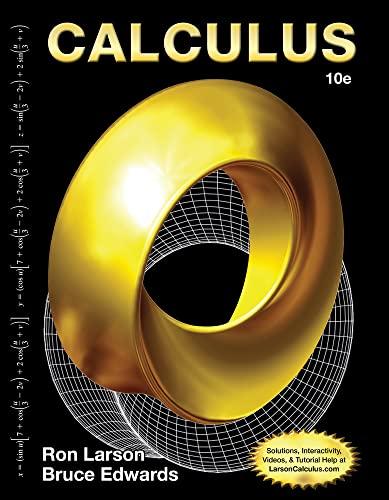Question
Exercise 3.3 Original Higher Price Compensating Variation $0.00 B $100.00 $100.00 Marshallian Surplus -$20.27 U=X^aY^(1-a) a 0.50 0.50 B=pX+Y so Y=B-pX p $0.20 $0.30 X=aB/p
Exercise 3.3 Original Higher Price Compensating Variation $0.00 B $100.00 $100.00 Marshallian Surplus -$20.27 U=X^aY^(1-a) a 0.50 0.50 B=pX+Y so Y=B-pX p $0.20 $0.30 X=aB/p X 250.00 166.67 Y=B-pX Y 50.00 50.00 U 111.80 91.29 1. Insert new price in D4. 2. Guess values of new budget in D2 to return... 3. utility to initial level (D9=C9). 4. (Optional) Reduce original budget to Adjust the original budget to obtain the new utility make C28 equal D28. to find the equivalent variation of the price change. Original Higher Price B $100.00 $100.00 Equivalent Variation $0.00 a 0.50 0.50 p $0.20 $0.30 X 250.00 166.67 Y 50.00 50.00 U 111.80 91.29
3. (This question pertains to Appendix 3A; please use the Excel spreadsheet provided on Blackboard for your computations). Imagine a person's utility function over two goods, X and Y, where Y represents dollars.Specifically, assume a Cobb-Douglas utility function:
U(X,Y) = Xa Y(1-a)
where 0 < a < 1.
Let the person's budget be B. The feasible amounts of consumption must satisfy the following equation:
B = pX + Y
where p is the unit price of X and the price of Y is set to 1.
Solving the budget constraint for Y and substituting into the utility function yields
U = Xa (B - pX)(1-a)
Using calculus, it can be shown that utility is maximized by choosing
X = aB/p
Also, it can be shown that the area under the Marshallian demand curve for a price increase from p to q yielding a change in consumption of X from xp to xq is given by
When B = 100, a = 0.5, and p = .2, X = 250 maximizes utility, which equals 111.80. If price is raised to p=.3, X falls to 166.67.
For the questions below, you need only to report your final answers.
a)Increase B until the utility raises to its initial level. The increase in B needed to return utility to its level before the price increase is the compensating variation (CV) for the price increase. What is the CV? (It can be found by guessing values until utility reaches its original level.)
b)Now, use the spreadsheet to calculate the equivalent variation (EV) of the price change. You can do so by reducing the budget B in the appropriate part of the spreadsheet.
c)Compare CS, as measured with the Marshallian demand curve, to the compensating variation and equivalent variation. Specifically, is the ordering of your quantities consistent with the lecture notes for this price increase?
Step by Step Solution
There are 3 Steps involved in it
Step: 1

Get Instant Access to Expert-Tailored Solutions
See step-by-step solutions with expert insights and AI powered tools for academic success
Step: 2

Step: 3

Ace Your Homework with AI
Get the answers you need in no time with our AI-driven, step-by-step assistance
Get Started


